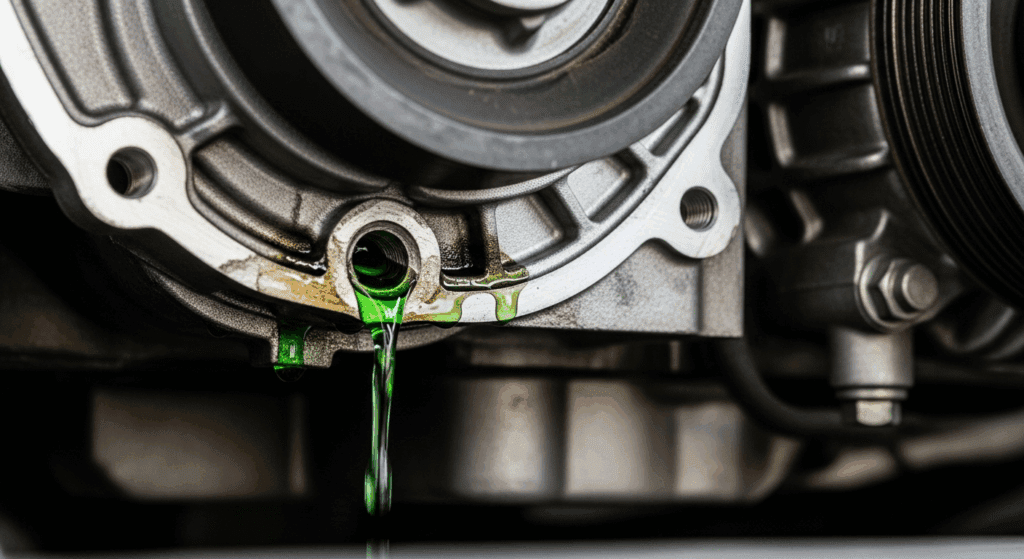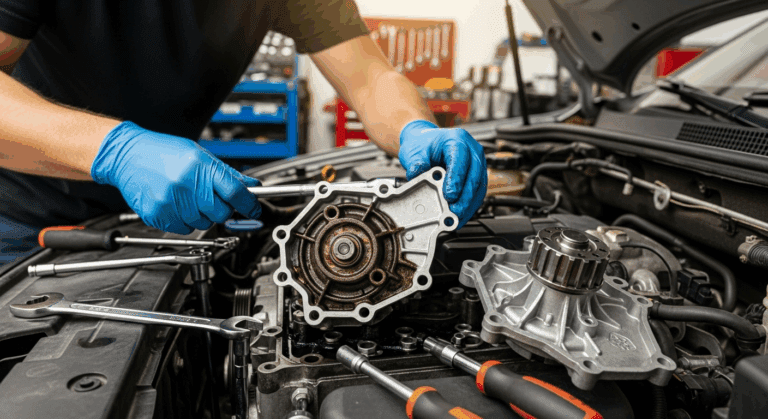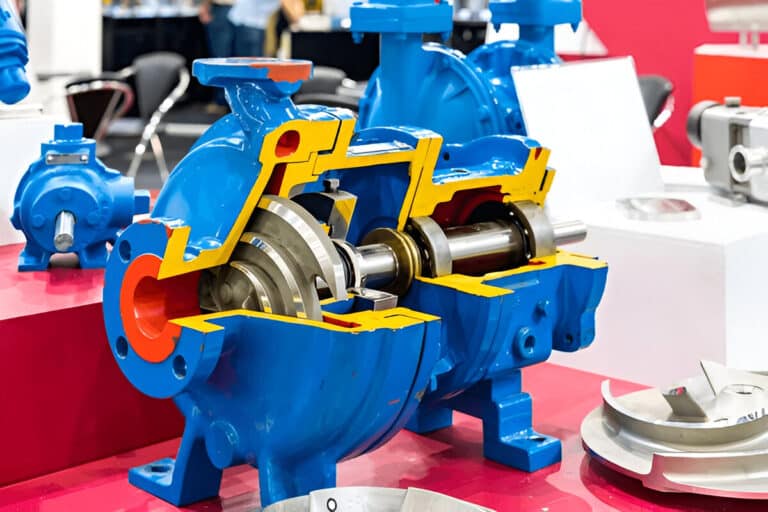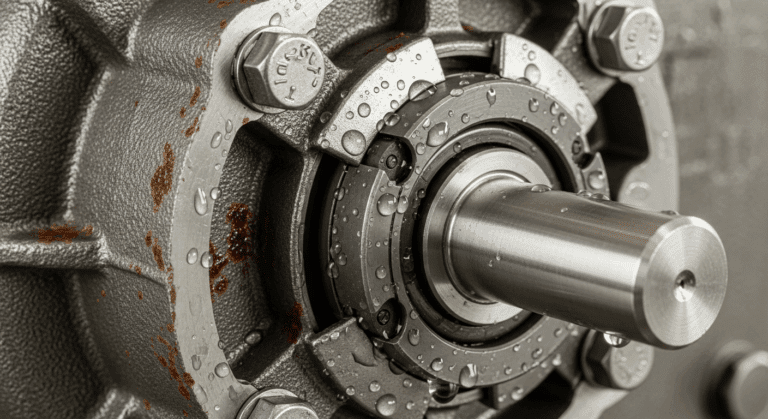Your water pump’s weep hole is leaking because the internal seal has failed, and this means you need to replace the entire water pump soon. This small leak is actually your pump’s way of warning you before catastrophic failure occurs.

What is a Weep Hole
A weep hole is a small drainage port built into your water pump that sits between the bearing assembly and the mechanical seal. It’s designed to let you know when the pump’s internal seal starts failing by allowing coolant to escape in a controlled way.
The hole typically measures about 1/8 inch in diameter and points downward. You’ll find it on the pump’s body, usually near where the pulley attaches.
Why Does Water Pump Weep Hole Leak
Water pump weep holes leak when the mechanical seal inside wears out and can no longer keep coolant contained. This seal sits between the pump’s impeller (which moves coolant) and the bearing assembly (which allows rotation).
Several factors cause this seal to fail over time:
Abrasive Wear
Contaminated coolant acts like liquid sandpaper on your pump’s seal, gradually wearing it down until it can’t hold pressure anymore. Rust particles, dirt, and old coolant breakdown products are the main culprits.
Chemical Degradation
Old or incorrect coolant chemically attacks the rubber components of your water pump seal, causing them to crack, swell, or dissolve. Most seals are made from materials like nitrile rubber or EPDM, which break down when exposed to the wrong chemicals.
Thermal Stress
Extreme temperature cycles cause the seal materials to expand and contract repeatedly, creating tiny cracks that eventually lead to failure. Your water pump experiences temperatures from below freezing to over 200°F during normal operation.
Overheating episodes are especially damaging. When your engine runs hot, the seal faces can warp or the rubber components can literally cook.
Dry Running
Running the pump without coolant for even a few seconds destroys the seal because it needs liquid for lubrication and cooling. This happens when air pockets form in the cooling system or coolant levels drop too low.
The seal faces generate tremendous friction when they touch without coolant between them. They can reach temperatures that permanently damage the sealing surfaces in seconds.
How to Fix Leak
- Replace the entire water pump – You can’t fix just the seal, as water pumps come as sealed units that must be replaced completely when the weep hole starts leaking.
- Flush the cooling system thoroughly – Remove all old coolant and contaminants before installing the new pump to prevent the same problem from happening again.
- Use the correct coolant type – Check your owner’s manual and use only the specified coolant mixed with distilled water at the proper ratio (usually 50/50).
- Replace the thermostat – Since you’re already draining the system, install a new thermostat to ensure proper cooling system operation.
- Inspect and replace worn hoses – Check all cooling system hoses for cracks, soft spots, or swelling and replace any that show signs of wear.
- Bleed air from the system properly – Follow your vehicle’s specific bleeding procedure to eliminate air pockets that could damage the new pump.
- Consider replacing the belt and tensioner – If your water pump is belt-driven, replace these components while you have easy access.
What Happens if You Plug the Weep Hole on a Water Pump
Plugging the weep hole turns a $150 repair into a $3,000 engine replacement because coolant will flood the bearing cavity instead of dripping harmlessly outside. Without an escape route, leaking coolant mixes with bearing grease, creating a milky sludge that destroys the bearing within hours.
The bearing then seizes completely, stopping the pump from turning. Your engine overheats immediately, warping the cylinder head and potentially cracking the engine block.
Even worse, you’ll get no warning before catastrophic failure. That small leak that would have given you days or weeks of warning time disappears, and the first sign of trouble becomes steam pouring from under your hood on the highway.
Some people try using stop-leak products that inadvertently clog the weep hole. These products might temporarily slow the leak, but they guarantee sudden pump failure without warning.
FAQs
How long can I drive with a leaking weep hole?
You can typically drive for a few days to a week with a small weep hole leak, but you should replace the pump as soon as possible. Monitor your coolant level daily and keep extra coolant in your vehicle.
Can I just add coolant and keep driving?
Adding coolant regularly might keep you going temporarily, but it’s risky and expensive. The leak will worsen quickly, and you risk overheating your engine if the pump fails completely while driving.
How much does water pump replacement cost?
Water pump replacement typically costs between $300-$800, depending on your vehicle. The pump itself costs $50-$200, with labor making up the rest since accessing the pump often requires removing several components.
What’s the difference between coolant and water pump leaks?
Water pump weep hole leaks appear at a specific spot on the pump body and worsen with engine speed. Other coolant leaks come from hoses, gaskets, or the radiator and might leak even when the engine is off.




